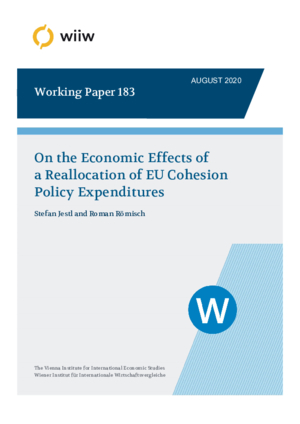On the Economic Effects of a Reallocation of EU Cohesion Policy Expenditures
Stefan Jestl and Roman Römisch
wiiw Working Paper No. 183, August 2020
36 pages including 4 Tables and 11 Figures
This paper analyses the economic effects of a reallocation of Cohesion Policy expenditures across EU countries. We evaluate a shift from stronger (i.e. older) Member States to less-developed EU economies (i.e. CEE countries) and vice versa. On top of that, we also assess the effects of a general reduction in the Cohesion Policy budget. For evaluation, we construct a demand-driven macroeconomic model which spans country models of 21 EU economies and is calibrated based on empirical data for the period 1995-2018. Our results suggest that a shift of Cohesion Policy funds to more (less) developed countries would result in a higher (lower) overall economic performance. However, the reallocation would affect economic outcomes in EU economies unevenly. In addition to direct effects on demand and production, it is pivotal to take into account indirect effects via trade as well. As a result, Cohesion Policy seems to be confronted with a trade-off between long-run convergence and short-run economic performance.
Keywords: Cohesion Policy, Macroeconomic Models, Reallocation
JEL classification: C53, O11, R11
Countries covered: Belgium, Bulgaria, Czechia, Denmark, Finland, France, Germany, Greece, Hungary, Ireland, Italy, Netherlands, Poland, Portugal, Romania, Slovakia, Slovenia, Spain, Sweden, United Kingdom
Research Areas: Regional Development
